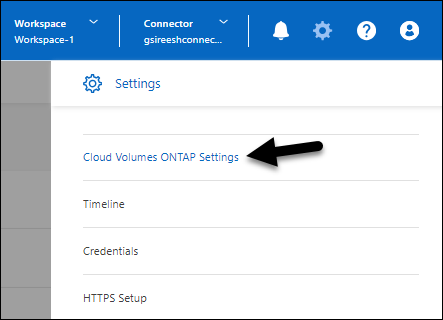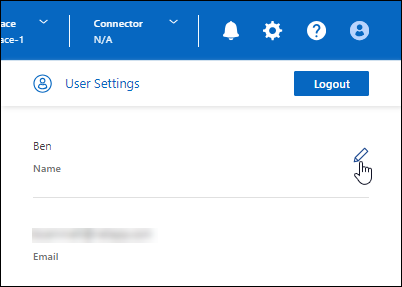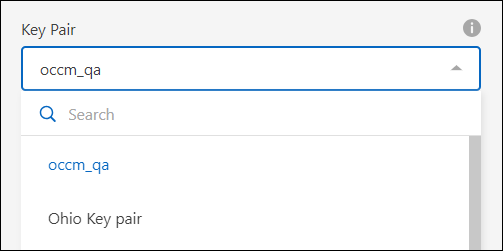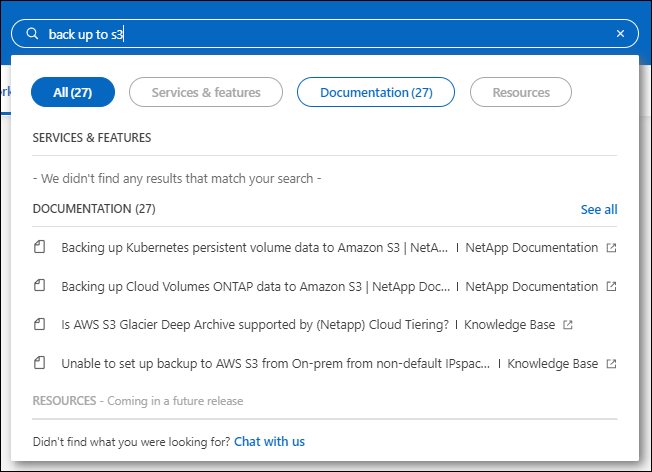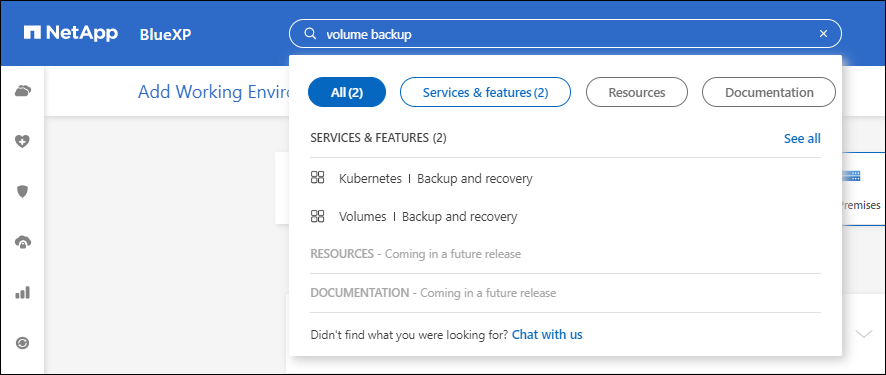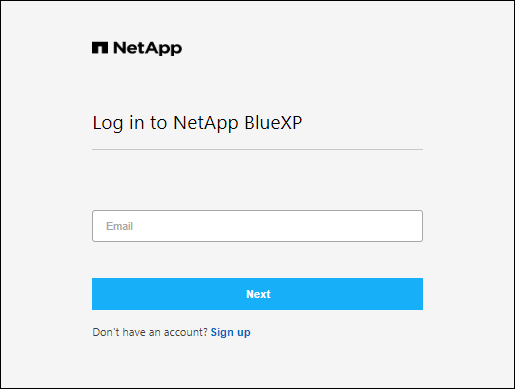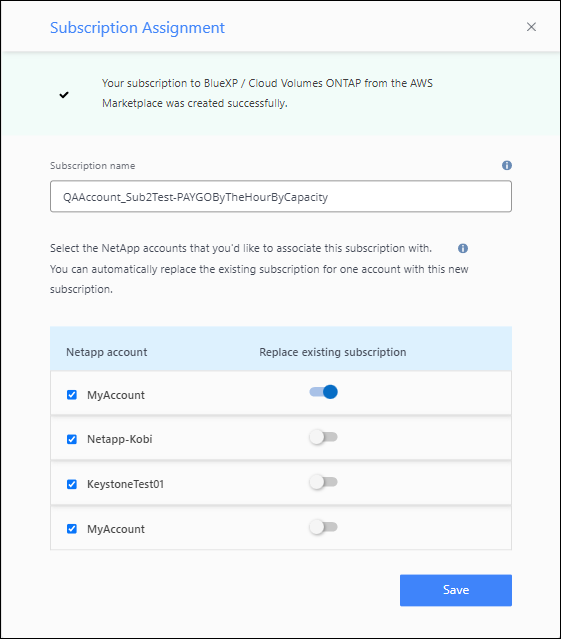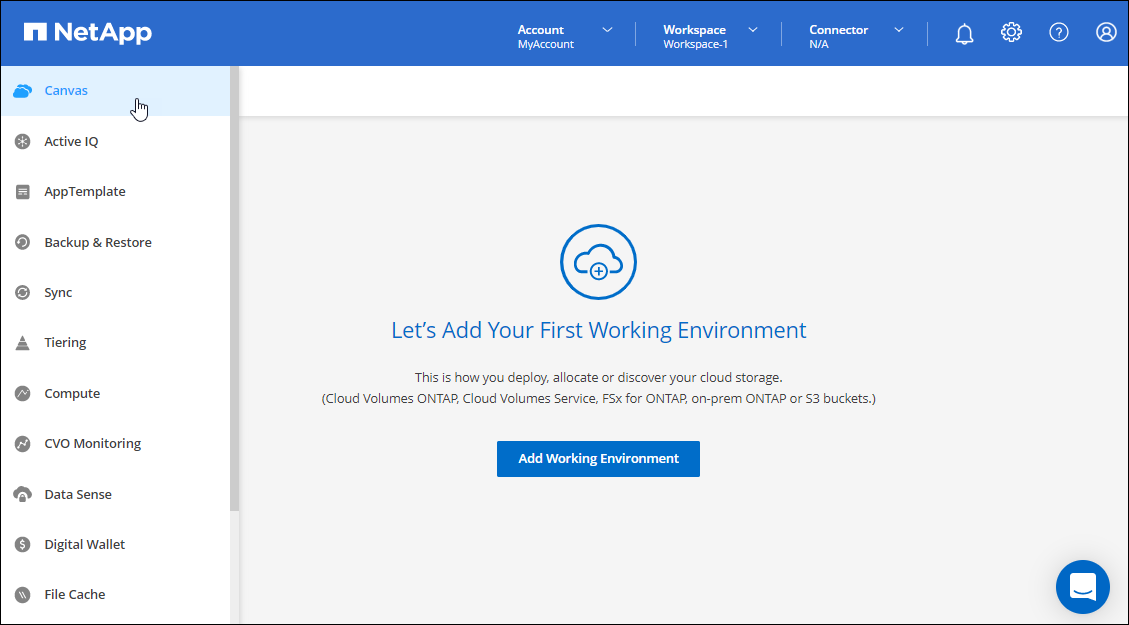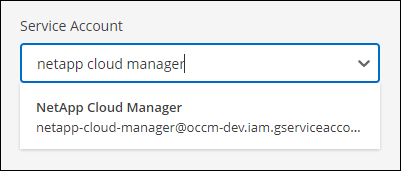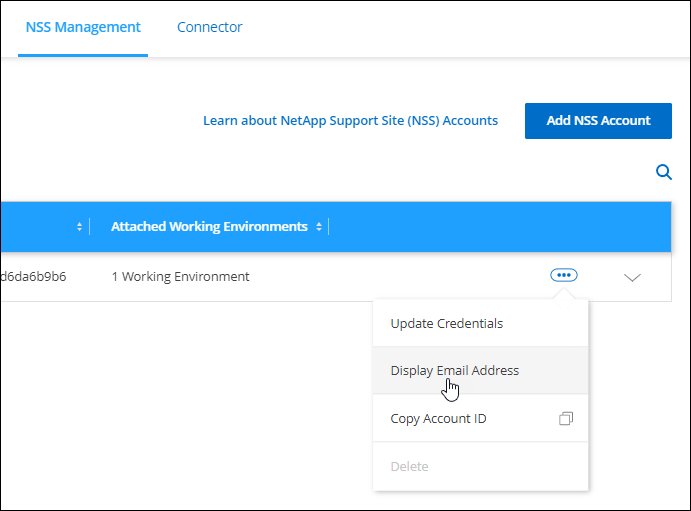| sidebar | permalink | keywords | summary |
|---|---|---|---|
sidebar |
whats-new.html |
what's new, features, new, release notes, enhancements, fixes, connectors |
Learn what's new with BlueXP administration features: BlueXP IAM, Connectors, cloud provider credentials, and more. |
Learn what’s new with BlueXP administration features: identity and access management (IAM), Connectors, cloud provider credentials, and more.
This release includes support for Docker Engine 26, an enhancement to SSL certificates, and bug fixes.
The 3.9.44 release is available for standard mode and restricted mode.
Starting with the 3.9.44 release of the Connector, Docker Engine 26 is now supported with new Connector installations on Ubuntu hosts.
If you have an existing Connector created prior to the 3.9.44 release, then Docker Engine 25.0.5 is still the maximum supported version on Ubuntu hosts.
When you use BlueXP in restricted mode or private mode, the user interface is accessible from the Connector virtual machine that’s deployed in your cloud region or on-premises. By default, BlueXP uses a self-signed SSL certificate to provide secure HTTPS access to the web-based console running on the Connector.
In this release, we made changes to the SSL certificate for new and existing Connectors:
-
The Common Name for the certificate now matches the short host name
-
The Certificate Subject Alternative Name is the Fully Qualified Domain Name (FQDN) of the host machine
BlueXP now supports installing the Connector on a Red Hat Enterprise Linux 9.4 host when using BlueXP in standard mode or restricted mode.
Support for RHEL 9.4 starts with the 3.9.40 release of the Connector.
The updated list of supported RHEL versions for standard mode and restricted mode now includes the following:
-
8.6 to 8.10
-
9.1 to 9.4
Podman 4.9.4 is now supported with all supported versions of Red Hat Enterprise Linux. Version 4.9.4 was previously supported with only RHEL 8.10.
The updated list of supported Podman versions includes 4.6.1 and 4.9.4 with Red Hat Enterprise Linux hosts.
Podman is required for RHEL hosts starting with the 3.9.40 release of the Connector.
We updated the AWS and Azure policies for the Connector to remove permissions that are no longer required. The permissions were related to BlueXP edge caching and discovery and management of Kubernetes clusters, which are no longer supported as of August, 2024.
We updated the Connector to support the Cloud Volumes ONTAP 9.15.1 release.
Support for this release includes an update to the Connector policy for Azure. The policy now includes the following permissions:
"Microsoft.Compute/virtualMachineScaleSets/write",
"Microsoft.Compute/virtualMachineScaleSets/read",
"Microsoft.Compute/virtualMachineScaleSets/delete"These permissions are required for Cloud Volumes ONTAP support of Virtual Machine Scale Sets. If you have existing Connectors and you want to use this new feature, you’ll need to add these permissions to the custom roles that are associated with your Azure credentials.
This release includes minor improvements and bug fixes.
The 3.9.43 release is available for standard mode and restricted mode.
To provide higher reliability and to improve the performance of BlueXP and the Connector, we now require additional CPU and RAM for the Connector virtual machine:
-
CPU: 8 cores or 8 vCPUs (the previous requirement was 4)
-
RAM: 32 GB (the previous requirement was 14 GB)
As a result of this change, the default VM instance type when deploying the Connector from BlueXP or from the cloud provider’s marketplace is as follows:
-
AWS: t3.2xlarge
-
Azure: Standard_D8s_v3
-
Google Cloud: n2-standard-8
The updated CPU and RAM requirements apply to all new Connectors. For existing Connectors, increasing the CPU and RAM is recommended to provide improved performance and reliability.
Podman version 4.9.4 is now supported when installing the Connector on a Red Hat Enterprise Linux 8.10 host.
A new private mode release is now available to download from the NetApp Support Site.
This release includes support for installing the Connector on a Red Hat Enterprise Linux 8 or 9 host when using BlueXP in private mode. The following versions of RHEL are supported:
-
8.6 to 8.10
-
9.1 to 9.3
Podman is required as the container orchestration tool for these operating systems.
You should be aware of Podman requirements, known limitations, a summary of operating system support, what to do if you have a RHEL 7 host, how to get started, and more.
This release includes the following versions of the BlueXP services that are supported with private mode.
| Service | Version included |
|---|---|
Connector |
3.9.42 |
Backup and recovery |
18 July 2024 |
Classification |
1 July 2024 (version 1.33) |
Cloud Volumes ONTAP management |
10 June 2024 |
Digital wallet |
30 July 2023 |
On-premises ONTAP cluster management |
30 July 2023 |
Replication |
18 Sept 2022 |
To learn more about what’s included in the versions of these BlueXP services, refer to the release notes for each BlueXP service.
BlueXP now supports installing the Connector on a Red Hat Enterprise Linux 8.10 host when using standard mode or restricted mode.
Support for RHEL 8.10 starts with the 3.9.40 release of the Connector.
This release includes minor improvements, bug fixes, and support for the Connector in the AWS Canada West (Calgary) region.
The 3.9.42 release is available for standard mode and restricted mode.
When the Connector is installed on an Ubuntu host, the minimum supported version of Docker Engine is now 23.0.6. It was previously 19.3.1.
The maximum supported version is still 25.0.5.
A new private mode release is now available to download from the NetApp Support Site. This release includes the following versions of the BlueXP services that are supported with private mode.
Note that this private mode release does not include support for the Connector with Red Hat Enterprise Linux 8 and 9.
| Service | Version included |
|---|---|
Connector |
3.9.40 |
Backup and recovery |
17 May 2024 |
Classification |
15 May 2024 (version 1.31) |
Cloud Volumes ONTAP management |
17 May 2024 |
Digital wallet |
30 July 2023 |
On-premises ONTAP cluster management |
30 July 2023 |
Replication |
18 Sept 2022 |
To learn more about what’s included in the versions of these BlueXP services, refer to the release notes for each BlueXP service.
This release of the BlueXP Connector includes support for additional operating systems, minor security improvements, and bug fixes.
At this time, the 3.9.40 release is available for standard mode and restricted mode.
The Connector is now supported on hosts running the following versions of Red Hat Enterprise Linux with new Connector installations when using BlueXP in standard mode or restricted mode:
-
8.6 to 8.9
-
9.1 to 9.3
Podman is required as the container orchestration tool for these operating systems.
You should be aware of Podman requirements, known limitations, a summary of operating system support, what to do if you have a RHEL 7 host, how to get started, and more.
On June 30, 2024, RHEL 7 will reach end of maintenance (EOM), while CentOS 7 will reach end of life (EOL). NetApp will continue to support the Connector on these Linux distributions until June 30, 2024.
In the 3.9.38 release, we updated the Connector policy for AWS to include the "ec2:DescribeAvailabilityZones" permission. This permission is now required to support AWS Local Zones with Cloud Volumes ONTAP.
This release of the BlueXP Connector includes minor security improvements and bug fixes.
At this time, the 3.9.39 release is available for standard mode and restricted mode.
Two additional permissions are now required to create a Connector in AWS from BlueXP:
"ec2:DescribeLaunchTemplates",
"ec2:CreateLaunchTemplate",These permissions are required to enable IMDSv2 on the EC2 instance for the Connector.
We have included these permissions in the policy that displays in the BlueXP user interface when creating a Connector and in the same policy that’s provided in the documentation.
|
Note
|
This policy contains only the permissions needed to launch the Connector instance in AWS from BlueXP. It’s not the same policy that gets assigned to the Connector instance. |
We have updated Docker Engine requirements to specify the maximum supported version on the Connector, which is 25.0.5. The minimum supported version is still 19.3.1.
A new private mode release is now available for BlueXP. This release includes the following versions of the BlueXP services that are supported with private mode.
| Service | Version included |
|---|---|
Connector |
3.9.38 |
Backup and recovery |
12 March 2024 |
Classification |
4 March 2024 |
Cloud Volumes ONTAP management |
8 March 2024 |
Digital wallet |
30 July 2023 |
On-premises ONTAP cluster management |
30 July 2023 |
Replication |
18 Sept 2022 |
This new release is available to download from the NetApp Support Site.
At this time, the 3.9.38 release is available for standard mode and restricted mode. This release includes support for IMDSv2 in AWS and an AWS permissions update.
BlueXP now supports the Amazon EC2 Instance Metadata Service Version 2 (IMDSv2) with the Connector instance and with Cloud Volumes ONTAP instances. IMDSv2 provides enhanced protection against vulnerabilities. Only IMDSv1 was previously supported.
The Instance Metadata Service (IMDS) is enabled as follows on EC2 instances:
-
For new Connector deployments from BlueXP or using Terraform scripts, IMDSv2 is enabled by default on the EC2 instance.
-
If you launch a new EC2 instance in AWS and then manually install the Connector software, IMDSv2 is also enabled by default.
-
If you launch the Connector from the AWS Marketplace, IMDSv1 is enabled by default. You can manually configure IMDSv2 on the EC2 instance.
-
For existing Connectors, IMDSv1 is still supported but you can manually configure IMDSv2 on the EC2 instance if you prefer.
-
For Cloud Volumes ONTAP, IMDSv1 is enabled by default on new and existing instances. You can manually configure IMDSv2 on the EC2 instances if you prefer.
We updated the Connector policy for AWS to include the "ec2:DescribeAvailabilityZones" permission. This permission is required for an upcoming release. We’ll update the release notes with more details when that release is available.
Proxy server settings for the Connector are now available from the Manage Connectors page (standard mode) or the Edit Connectors page (restricted mode and private mode).
In addition, we renamed the Connector Settings page to Cloud Volumes ONTAP Settings.
This release of the BlueXP Connector includes minor security improvements and bug fixes.
At this time, the 3.9.37 release is available for standard mode and restricted mode.
A new private mode release is now available for BlueXP. This release includes version 3.9.35 of the Connector and versions of the BlueXP services that are supported with private mode as of October 2023.
This new release is available to download from the NetApp Support Site.
-
You can now use the BlueXP audit service API to export audit logs.
The audit service records information about the operations performed by BlueXP services. This includes workspaces, Connectors used, and other telemetry data. You can use this data to determine what actions were performed, who performed them, and when they occurred.
Note that this link is also accessible from the BlueXP user interface on the Timeline page.
-
This release of the Connector also includes Cloud Volumes ONTAP enhancements and on-prem ONTAP cluster enhancements.
-
You can now discover on-premises ONTAP clusters from the My estate tab (previously My Opportunities)
-
If you’re using the Connector in an Azure Government region, you should ensure that the Connector can contact the following endpoint:
This endpoint is required to manually install the Connector and to upgrade the Connector and its Docker components.
As a result of this change, a Connector in an Azure Government region no longer contacts the following endpoint:
Note that this endpoint is still required for all other restricted mode configurations and for standard mode.
-
When you open a NetApp support case from the Support Dashboard, BlueXP now opens the case using the NetApp Support Site account that is associated with your BlueXP login. BlueXP previously used the NetApp Support Site account associated with the entire BlueXP account.
As part of this change, support registration for a BlueXP account is now done through the NetApp Support Site account that’s associated with a user’s BlueXP login. Previously, support registration was done through an NSS account associated with the entire BlueXP account. As a result, other BlueXP users will not see the same support registration status if they have not associated a NetApp Support Site account with their BlueXP login. If you previously registered your BlueXP account for support, then your registration status is still valid. You just need to add a user-level NSS account to see the status.
-
You can now search for documentation from within BlueXP. Search results now provide links to content on docs.netapp.com and kb.netapp.com, which might help answer a question that you have.
-
The Connector now enables you to add and manage Azure storage accounts from BlueXP.
-
The Connector is now supported in the following AWS regions:
-
Hyderabad (ap-south-2)
-
Melbourne (ap-southeast-4)
-
Spain (eu-south-2)
-
UAE (me-central-1)
-
Zurich (eu-central-2)
-
-
The Connector is now supported in the following Azure regions:
-
Brazil South
-
France South
-
Jio India Central
-
Jio India West
-
Poland Central
-
Qatar Central
-
-
The Connector is now supported in the following Google Cloud regions:
-
Columbus (us-east5)
-
Dallas (us-south1)
-
-
Ubuntu 22.04 is the new operating system for the Connector when you deploy a Connector from BlueXP or from your cloud provider’s marketplace.
You also have the option to manually install the Connector on your own Linux host that’s running Ubuntu 22.04.
-
Red Hat Enterprise Linux 8.6 and 8.7 are no longer supported with new Connector deployments.
These versions are not supported with new deployments because Red Hat no longer supports Docker, which is required for the Connector. If you have an existing Connector running on RHEL 8.6 or 8.7, NetApp will continue to support your configuration.
Red Hat 7.6, 7.7, 7.8, and 7.9 are still supported with new and existing Connectors.
-
The Connector is now supported in the Qatar region in Google Cloud.
-
The Connector is also supported in the Sweden Central region in Microsoft Azure.
-
This release of the Connector includes Cloud Volumes ONTAP enhancements.
BlueXP deployment modes enable you to use BlueXP in a way that meets your business and security requirements. You can choose from three modes:
-
Standard mode
-
Restricted mode
-
Private mode
|
Note
|
The introduction of restricted mode replaces the option to enable or disable the SaaS platform. You can enable restricted mode at the time of account creation. It can’t be enabled or disabled later. |
-
Email notifications are now supported with the BlueXP digital wallet.
If you configure your notification settings, you can receive email notifications when your BYOL licenses are about to expire (a "Warning" notification) or if they have already expired (an "Error" notification).
-
The Connector is now supported in the Google Cloud Turin region.
-
You can now manage the user credentials that are associated with your BlueXP login: ONTAP credentials and NetApp Support Site (NSS) credentials.
When you go to Settings > Credentials, you can view the credentials, update the credentials, and delete them. For example, if you change the password for these credentials, then you’ll need to update the password in BlueXP.
-
You can now upload attachments when you create a support case or when you update the case notes for an existing support case.
-
This release of the Connector also includes Cloud Volumes ONTAP enhancements and on-prem ONTAP cluster enhancements.
-
Search is now available in the BlueXP console. At this time, you can use the search to find BlueXP services and features.
-
You can view and manage active and resolved support cases directly from BlueXP. You can manage the cases associated with your NSS account and with your company.
-
The Connector is now supported in any cloud environment that has complete isolation from the internet. You can then use the BlueXP console that’s running on the Connector to deploy Cloud Volumes ONTAP in the same location and to discover on-premises ONTAP clusters (if you have a connection from your cloud environment to on your on-premises environment). You can also use BlueXP backup and recovery to back up Cloud Volumes ONTAP volumes in AWS and Azure commercial regions. No other BlueXP services are supported in this type of deployment, except for the BlueXP digital wallet.
The cloud region can be a region for secure US agencies like AWS Top Secret Cloud, AWS Secret Cloud, Azure IL6, or any commercial region.
To get started, manually install the Connector software, log in to the BlueXP console that’s running on the Connector, add your BYOL license to the BlueXP digital wallet, and then deploy Cloud Volumes ONTAP.
-
The Connector now enables you to add and manage Amazon S3 buckets from BlueXP.
-
This release of the Connector includes Cloud Volumes ONTAP enhancements.
-
On the Log in page, you’re now prompted to enter the email address associated with your login. After you select Next, BlueXP then prompts you to authenticate using the authentication method associated with your login:
-
The password for your NetApp cloud credentials
-
Your federated identity credentials
-
Your NetApp Support Site credentials
-
-
If you’re new to BlueXP and you have existing NetApp Support Site (NSS) credentials, then you can skip the sign up page and enter your email address directly in the log in page. BlueXP will sign you up as part of this initial login.
-
When you subscribe to BlueXP from your cloud provider’s marketplace, you now have the option to replace the existing subscription for one account with the new subscription.
-
BlueXP will now notify you if your Connector has been powered down for 14 days or longer.
-
We updated the Connector policy for Google Cloud to include a permission that’s required to create and manage storage VMs on Cloud Volumes ONTAP HA pairs:
compute.instances.updateNetworkInterface
-
This release of the Connector includes Cloud Volumes ONTAP enhancements.
This release of the Connector includes Cloud Volumes ONTAP enhancements and bug fixes.
-
We’ve updated the URL for the BlueXP console to https://console.bluexp.netapp.com
-
The Connector is now supported in the Google Cloud Israel region.
-
This release of the Connector also includes Cloud Volumes ONTAP enhancements and on-prem ONTAP cluster enhancements.
-
Your PAYGO subscriptions and annual contracts for BlueXP are now available to view and manage from the digital wallet.
-
This release of the Connector also includes Cloud Volumes ONTAP enhancements.
NetApp BlueXP extends and enhances the capabilities that were provided through Cloud Manager. BlueXP is a unified control plane that provides a hybrid multicloud experience for storage and data services across on-premises and cloud environments.
- Unified management experience
-
BlueXP enables you to manage all of your storage and data assets from a single interface.
You can use BlueXP to create and administer cloud storage (for example, Cloud Volumes ONTAP and Azure NetApp Files), to move, protect, and analyze data, and to control many on-prem and edge storage devices.
- New navigation menu
-
In BlueXP’s navigation menu, services are now organized by categories and are named according to their functionality. For example, you can access BlueXP backup and recovery from the Protection category.
- New product integrations
-
-
You can now manage the Amazon S3 buckets in the AWS accounts where the Connector is installed.
-
You can now manage more on-prem storage systems, such as E-Series and StorageGRID.
-
You can now use data services previously only available as a standalone service with a separate UI, such as BlueXP digital advisor (Active IQ).
-
- Learn more
Cloud Manager now prompts you to update the credentials associated with your NetApp Support Site accounts when the refresh token associated with your account expires after 3 months. Learn how to manage NSS accounts
-
We enhanced the Connector deployment wizard by adding an in-product guide that provides steps to meet the minimum requirements for Connector installation: permissions, authentication, and networking.
-
You can now create a NetApp support case directly from Cloud Manager in the Support Dashboard.
-
This release of the Connector also includes Cloud Volumes ONTAP enhancements.
-
We’ve introduced a new way to discover the existing cloud resources that you’re not yet managing in Cloud Manager.
On the Canvas, the My Opportunities tab provides a centralized location to discover existing resources that you can add to Cloud Manager for consistent data services and operations across your hybrid multicloud.
In this initial release, My Opportunities enables you to discover existing FSx for ONTAP file systems in your AWS account.
-
This release of the Connector also includes Cloud Volumes ONTAP enhancements.
We updated the documentation by adding the Cloud Manager policies directly inside the docs. This means you can now view the required permissions for the Connector and Cloud Volumes ONTAP right alongside the steps that describe how to set them up. These policies were previously accessible from a page on the NetApp Support Site.
We also created a page that provides links to each of the policies. View the permissions summary for Cloud Manager.
-
We’ve introduced a new way to navigate to the growing list of features in the Cloud Manager interface. All the familiar Cloud Manager capabilities can now be easily found by hovering over the left panel.
-
You can now configure Cloud Manager to send notifications by email so you can be informed of important system activity even when you’re not logged into the system.
-
Cloud Manager now supports Azure Blob storage and Google Cloud Storage as working environments, similar to Amazon S3 support.
After you install a Connector in Azure or Google Cloud, Cloud Manager now automatically discovers information about Azure Blob storage in your Azure subscription or the Google Cloud Storage in the project where the Connector is installed. Cloud Manager displays the object storage as a working environment that you can open to view more detailed information.
Here’s an example of an Azure Blob working environment:
-
We redesigned the resources page for an Amazon S3 working environment by providing more detailed information about S3 buckets, such as capacity, encryption details, and more.
-
The Connector is now supported in the following Google Cloud regions:
-
Madrid (europe-southwest1)
-
Paris (europe-west9)
-
Warsaw (europe-central2)
-
-
The Connector is now supported in the Azure West US 3 region.
-
This release of the Connector also includes Cloud Volumes ONTAP enhancements.
When new users sign up to Cloud Central, they can now select the Log in with NetApp option to log in with their NetApp Support Site credentials. This is an alternative to entering an email address and password.
|
Note
|
Existing logins that use an email address and password need to keep using that login method. The Log in with NetApp option is available for new users who sign up. |
-
The Connector is now supported in the AWS Jakarta region (ap-southeast-3).
-
The Connector is now supported in the Azure Brazil Southeast region.
-
This release of the Connector also includes Cloud Volumes ONTAP enhancements and on-prem ONTAP cluster enhancements.
-
The Connector is now supported in the following Google Cloud regions:
-
Delhi (asia-south2)
-
Melbourne (australia-southeast2)
-
Milan (europe-west8)
-
Santiago (southamerica-west1)
-
-
When you select the Google Cloud service account to use with the Connector, Cloud Manager now displays the email address that’s associated with each service account. Viewing the email address can make it easier to distinguish between service accounts that share the same name.
-
We have certified the Connector in Google Cloud on a VM instance with an OS that supports Shielded VM features
-
This release of the Connector also includes Cloud Volumes ONTAP enhancements. Learn about those enhancements
-
New AWS permissions are required for the Connector to deploy Cloud Volumes ONTAP.
The following permissions are now required to create an AWS spread placement group when deploying an HA pair in a single Availability Zone (AZ):
"ec2:DescribePlacementGroups", "iam:GetRolePolicy",
These permissions are now required to optimize how Cloud Manager creates the placement group.
Be sure to provide these permissions to each set of AWS credentials that you’ve added to Cloud Manager. View the latest IAM policy for the Connector.
-
You can now create a Connector by letting Cloud Manager assume an IAM role that you set up in your environment. This authentication method is more secure than sharing an AWS access key and secret key.
-
This release of the Connector also includes Cloud Volumes ONTAP enhancements. Learn about those enhancements
-
When you create a new Connector in Google Cloud, Cloud Manager will now display all of your existing firewall policies. Previously, Cloud Manager wouldn’t display any policies that didn’t have a target tag.
-
This release of the Connector also includes Cloud Volumes ONTAP enhancements. Learn about those enhancements
This release of the Connector includes Cloud Volumes ONTAP enhancements. Learn about those enhancements
We reduced the number of endpoints that a Connector needs to contact in order to manage resources and processes within your public cloud environment.
When you deploy a new Connector in AWS from Cloud Manager, you can now choose to encrypt the Connector’s EBS disks using the default master key or a managed key.
Starting in December 2021, NetApp now uses Microsoft Azure Active Directory as the identity provider for authentication services specific to support and licensing. As a result of this update, Cloud Manager will prompt you to update the credentials for any existing NetApp Support Site accounts that you previously added.
If you haven’t yet migrated your NSS account to IDaaS, you first need to migrate the account and then update your credentials in Cloud Manager.
If your organization has multiple NetApp Support Site accounts, you can now change which account is associated with a Cloud Volumes ONTAP system.
An independent certified public accountant firm and services auditor examined Cloud Manager, Cloud Sync, Cloud Tiering, Cloud Data Sense, and Cloud Backup (Cloud Manager platform), and affirmed that they have achieved SOC 2 Type 2 reports based on the applicable Trust Services criteria.
You can no longer use the Cloud Manager Connector as a proxy server to send AutoSupport messages from Cloud Volumes ONTAP. This functionality has been removed and is no longer supported. You will need to provide AutoSupport connectivity through a NAT instance or your environment’s proxy services.
When you create a new Connector in Microsoft Azure, you can now authenticate with an Azure service principal, rather than with Azure account credentials.
The Notification service has been introduced so you can view the status of Cloud Manager operations that you have initiated during your current login session. You can verify whether the operation was successful, or if it failed. See how to monitor operations in your account.
We redesigned the Add Connector wizard to add new options and to make it easier to use. You can now add tags, specify a role (for AWS or Azure), upload a root certificate for a proxy server, view code for Terraform automation, view progress details, and more.
NetApp Support Site (NSS) accounts are now managed from the Support Dashboard, rather than from the Settings menu. This change makes it easier to find and manage all support-related information from a single location.
The Timeline in Cloud Manager now shows actions and events related to account management. The actions include things like associating users, creating workspaces, and creating Connectors. Checking the Timeline can be helpful if you need to identify who performed a specific action, or if you need to identify the status of an action.
If you configured a proxy server, you can now enable an option to send API calls directly to Cloud Manager without going through the proxy. This option is supported with Connectors that are running in AWS or in Google Cloud.
You can now create a service account user.
A service account acts as a "user" that can make authorized API calls to Cloud Manager for automation purposes. This makes it easier to manage automation because you don’t need to build automation scripts based on a real person’s user account who can leave the company at any time. And if you’re using federation, you can create a token without generating a refresh token from the cloud.
You can now allow private previews in your account to get access to new NetApp cloud services as they are made available as a preview in Cloud Manager.
You can also allow third-party services in your account to get access to third-party services that are available in Cloud Manager.
This update includes enhancements to several features and services.
This release of Cloud Manager includes enhancements to the management of Cloud Volumes ONTAP.
Cloud Manager can now deploy and manage Cloud Volumes ONTAP 9.9.0.
-
You can now deploy Cloud Volumes ONTAP 9.8 in the AWS Commercial Cloud Services (C2S) environment.
-
Cloud Manager has always enabled you to encrypt Cloud Volumes ONTAP data using the AWS Key Management Service (KMS). Starting with Cloud Volumes ONTAP 9.9.0, data on EBS disks and data tiered to S3 are encrypted if you select a customer-managed CMK. Previously, only EBS data would be encrypted.
Note that you’ll need to provide the Cloud Volumes ONTAP IAM role with access to use the CMK.
You can now deploy Cloud Volumes ONTAP 9.8 in the Azure Department of Defense (DoD) Impact Level 6 (IL6).
-
We’ve reduced the number of IP addresses that are required for Cloud Volumes ONTAP 9.8 and later in Google Cloud. By default, one less IP address is required (we unified the intercluster LIF with the node management LIF). You also have the option to skip the creation of the SVM management LIF when using the API, which would reduce the need for an additional IP address.
-
When you deploy a Cloud Volumes ONTAP HA pair in Google Cloud, you can now choose shared VPCs for VPC-1, VPC-2, and VPC-3. Previously, only VPC-0 could be a shared VPC. This change is supported with Cloud Volumes ONTAP 9.8 and later.
-
Cloud Manager now notifies Admin users through an email when a Connector isn’t running.
Keeping your Connectors up and running helps to ensure the best management of Cloud Volumes ONTAP and other NetApp Cloud Services.
-
Cloud Manager now displays a notification if you need to change the instance type for your Connector.
Changing the instance type ensures that you can use the new features and capabilities that you’re currently missing.
-
Cloud Sync now supports sync relationships between ONTAP S3 Storage and SMB servers:
-
ONTAP S3 Storage to an SMB server
-
An SMB server to ONTAP S3 Storage
-
-
Cloud Sync now enables you to unify a data broker group’s configuration directly from the user interface.
We don’t recommend changing the configuration on your own. You should consult with NetApp to understand when to change the configuration and how to change it.
-
When tiering to Google Cloud Storage, you can apply a lifecycle rule so that the tiered data transitions from the Standard storage class to lower-cost Nearline, Coldline, or Archive storage after 30 days.
-
Cloud Tiering now displays if you have any undiscovered on-prem ONTAP clusters so that you can add them to Cloud Manager to enable tiering or other services on those clusters.
Now you can dynamically change the service level for a volume to meet workload needs and optimize your costs. The volume is moved to the other capacity pool with no impact to the volume. Learn more
